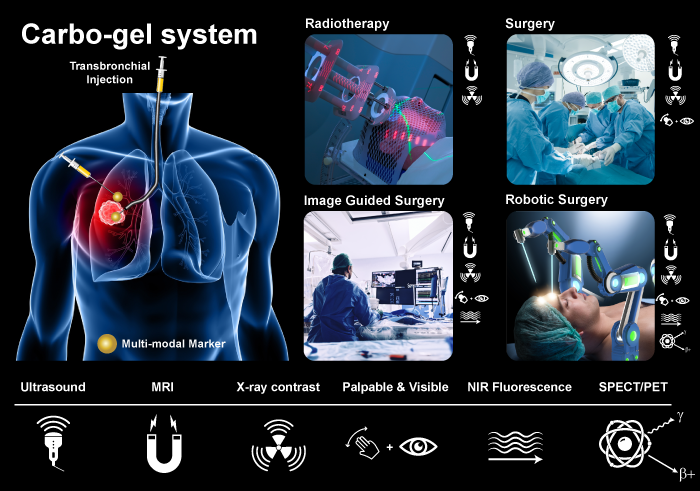A research team headed by DTU Health Tech bridges diagnostic advances and therapeutic procedures.
Over the years, the resolution and performance of diagnostic imaging has continuously improved and is today able to identify even very small tumors. This enables medical doctors to plan radiotherapy and surgical procedures very accurately. However, they lack smart markers to translate the very accurate image findings to therapy. Reliable reference points or markers are therefore important to improve the precision of therapeutic procedures. Markers can for example assist surgeons to accurately identify and remove cancerous lesions with optimal surgical margins while minimizing trauma to healthy tissue and fragile structures.
Existing markers are challenged by for example patient discomfort when administered, difficulties in placement of the marker, poor signal-to-noise ratios, and migration i.e. when the marker moves in the body.
The researchers demonstrate proof of concept in the high-impact scientific journal Science Advances for a solution to bridge the gap that doctors experience between excellent diagnostic possibilities and the following therapeutic procedures. Namely, a liquid marker system called Carbo-gel.
“We have developed a new fiducial liquid marker, which can be used across all common imaging modalities”, Senior Researcher Anders E. Hansen says and continues.
“The advantages of Carbo-gel make it a candidate for improved and safer treatment of cancer because the marker and injection procedure are well-tolerated. Once it is injected, it forms a positionally stable marker. It has intrinsic radiographic, magnetic resonance and ultrasound visibility and is easily expanded to also have nuclear and fluorescence imaging properties. Based on these features the marker can improve the precision of therapeutic procedures such as radiotherapy, surgery, image-guided surgery and robotic surgery. The liquid form makes the marker injectable through very thin needles and compatible with high-precision clinical technologies.”
The new technology has been tested successfully in patients with lung cancer, and further applications are being explored, for example to mark anatomical locations where current technology are difficult to apply.
In a concluding remark Professor and Head of Department Thomas Andresen adds, “The work presented in this paper is foundational and comprises years of research. It is the result and an example of cross institutional collaboration, where scientists with backgrounds in chemistry, materials science and mathematics worked together with health professionals at the hospitals to drive a unique result.”

The Carbo-gel system. Illustration by Jonas Rosager Henriksen.
Read the full paper: Multimodal soft tissue markers for bridging high-resolution diagnostic imaging with therapeutic intervention
Carbo-gel has been further developed based on the spinout company Nanovi’s patented radiotherapy marker BioXmark to the current multimodal marker. Read more about Nanovi here.